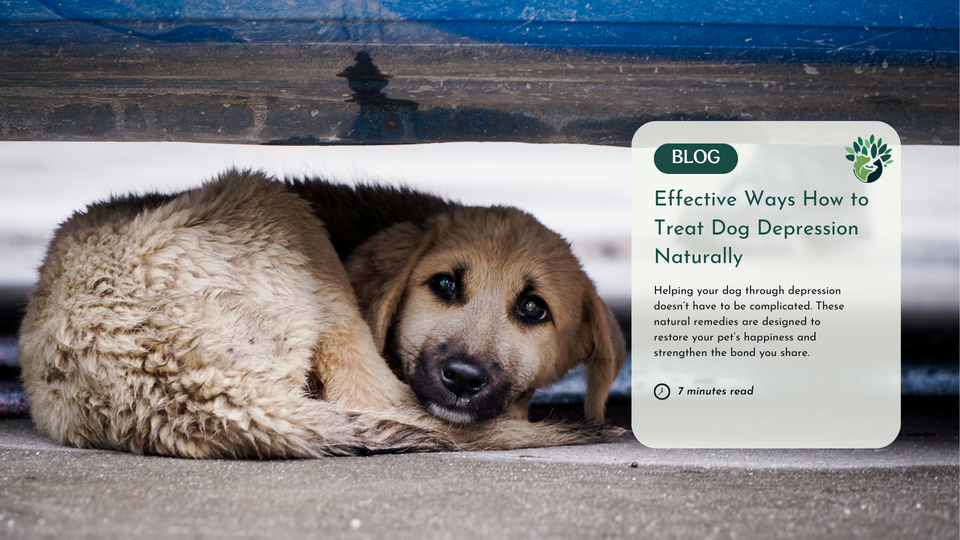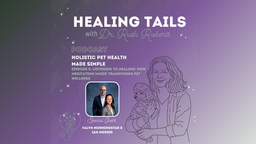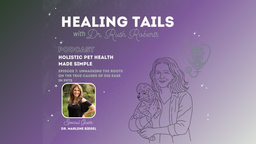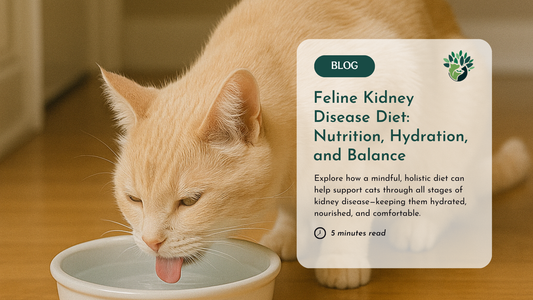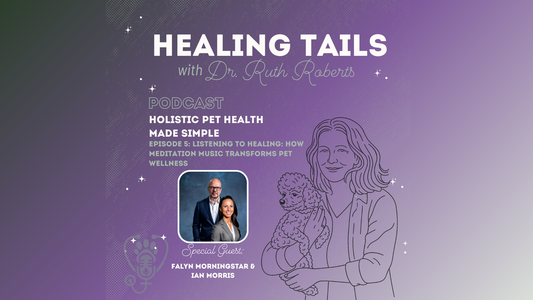Have you ever wondered if your dog feels sad or anxious? It may sound odd, but dogs can feel emotional pain just like people. They can have difficult times emotionally. In this article, you will learn what causes dog depression, how to recognize its signs, and find natural ways to help your dog.
Dog Depression: How Our Mood Affects Them
Dogs are intuitive and can sense our emotions. When we feel down or anxious, they often respond with love and support, cuddling, nuzzling, or sitting quietly with us. They can also experience depression when they are feeling depressed.
Nature's Scientific Reports looked at how stress hormones change in dogs and their owners over time. The results are interesting. They show that dogs can pick up on human stress and may reflect it. Lina Roth, a professor at Linkoping University in Sweden and one of the authors of the study, explained that when a dog’s owner is stressed, the dog often shows signs of stress, too.
What Causes Depression in Dogs?
Dogs are emotional creatures that can suffer from depression for various reasons. Here are some common causes of depression in dogs.
-
Grief and Loss
Losing a human or animal companion can hit a dog hard, leaving them sad and anxious. Dogs form deep emotional bonds, and the loss of someone they love disrupts their routine and sense of security. Whether it’s another pet or their caregiver, adjusting to this absence can be tough for them.
-
Chronic Pain
Chronic pain from conditions like arthritis, hip dysplasia, or cancer can cause depression in dogs. Pain can make them lethargic, lose interest in activities they once loved, and even lose their appetite, leading to weight loss and weakness. They may also show aggression or unusual behavior due to discomfort.
-
Environmental Changes
Changes in a dog's environment can affect their mental and emotional health. Big changes like moving, rehoming, or adding a new baby or pet can cause stress. Even smaller changes, like an owner returning to work or kids going back to school, also can make dogs feel anxious or lonely.
-
Social Isolation
Dogs need to interact regularly with other dogs and people to stay healthy. Without enough socialization, they can feel lonely, anxious, or depressed. Playing with other dogs helps them learn important skills like communication, boundaries, and proper behavior.
Socializing also gives them mental stimulation, which is crucial for their development. Through play and exploration, dogs develop problem-solving skills, adapt to new environments, and become more confident.
-
Lack of Exercise
Dogs can feel sad if they don't get enough exercise. Exercise is not only good for their body, but it also helps them feel happy. When dogs exercise, their body makes something called endorphins, which makes them feel good. If dogs don't get enough exercise, they might not want to play or do things they like. This can make them feel sad, tired, and bored, leading to depression.
-
A Lack of Mental Stimulation
Dogs need mental stimulation to stay happy and entertained. Without this, they can become bored or even depressed. High-energy breeds like Border Collies, Australian Shepherds, German Shepherds, and Siberian Huskies need more mental challenges to stay active.
If they don't get enough stimulation, they may become passive, uninterested, or destructive. Each breed has its own needs. Some dogs are okay with walks and playtime, while others require more complex tasks to keep them engaged.
-
Trauma
Dogs that have been abused, neglected, or traumatized may get depressed. Trauma can change their behavior, causing fear, anxiety, and withdrawal. Some dogs might avoid their owners or other pets, while others may act aggressively. It is important to know that dogs can emotionally respond to traumatic events, and they need proper care and attention to heal.
How to Treat Dog Depression Naturally
If you notice your dog is depressed, take action right away. Delaying can weaken a dog's immune system. Here’s how you can treat them naturally:
1. Identify The Core Problem Why Your Dog is Stressed
To spot stress in your pet, start by watching their behavior. Signs like a loss of appetite, excessive chewing, or licking can mean they're feeling anxious or uneasy. Once you notice these signs, it’s time to figure out what’s causing them.
First, think about your pet’s environment. Is your home too loud or chaotic? Have there been any changes, like a move or adding a new pet? These types of changes can stress your pet out.
Social or physical factors might also play a role. Your pet could be uncomfortable around unfamiliar people or animals, or maybe they’re in pain during things like nail trims. Identifying these triggers can help you reduce your pet’s stress and keep them calmer in the future.
2. Create a Safe Environment
Creating a safe, calming environment for your dog reduces anxiety and boosts immunity. This is important during loud noises and as a proactive measure for overall calm.
Avoid overly comforting them when anxious; instead, encourage positive behaviors. Reward your dog with treats and affection for following commands or learning new tricks. This boosts their self-esteem and sense of accomplishment.
3. Use a Crate to Calm Your Beloved Dogs
A crate can help dogs who are feeling sad or anxious by providing a safe and calming space. To make the crate more inviting, add cozy bedding, toys, and familiar items.
Always use the crate kindly—don’t use it as punishment or force your dog inside. With positive reinforcement, patience, love, and attention, the crate can improve your dog’s emotional well-being and quality of life.
4. Use Exercise and Physical Activity
Exercise and physical activity can help reduce stress in your dog. Take them on a long walk, play fetch, or visit a fenced-in park where they can run and play ball. These activities relieve tension and keep them physically healthy. For a change, take them to the beach for a refreshing workout.
5. Give Them Mental Stimulation
If your dog struggles with depression, mental stimulation can help improve their well-being. Just like physical exercise, mental exercise can combat sadness and boost mood. Interactive toys are a great way to engage your dog's brain, encouraging problem-solving and providing a sense of accomplishment. This type of stimulation not only lifts their spirits but also helps build cognitive skills.
6. Help Your Dog Stay Healthy with Fresh Meals
If your dog isn't eating, try giving them fresh, homemade meals to help spark their appetite. Stick to regular mealtimes and ensure the food is nutritious and includes all the necessary nutrients. The Original CrockPET Diet recipe book offers a variety of tasty, fiber-rich meals that can increase energy and support overall health. This way, you can prepare meals that help your dog feel better and remain strong.
7. Stick with a Consistent Routine
Dogs feel secure with routine. A consistent schedule, including regular meals, exercise, and playtime, helps them feel safe and relaxed. A daily routine improves their health, reduces stress, and makes them happier.
Conclusion
Dogs can feel depression just like humans. This can happen due to things like losing a friend, feeling pain, or not getting enough activity. We can help our dogs feel better by making their environment safe, giving them regular exercise, providing mental challenges, and ensuring they eat well. It is important to be consistent, show love, and pay attention to their needs. This support helps them feel happier and healthier.


